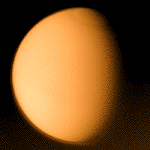 |
Left, a visible light picture shows nothing because of the dense cloud layer surrounding the moon completely. (http://seds.lpl.arizona.edu/nineplanets/nineplanets/titan.html)
|
Key points: Titan and its surface; nature of smaller moons; rings and what causes them
The larger moons of the outer planets are build up of icy materials. We can view them as having grown by comet impact rather than asteroid impact. Two large moons are notable -- Titan for Saturn, Triton for Neptune
Titan:
 |
Left, a visible light picture shows nothing because of the dense cloud layer surrounding the moon completely. (http://seds.lpl.arizona.edu/nineplanets/nineplanets/titan.html)
|
Click here to land on the surface with Cassini Huygen's probe ![]() (from Cassini-Huygens Project, http://saturn.jpl.nasa.gov/multimedia/videos/huygens-probe/index.cfm)
(from Cassini-Huygens Project, http://saturn.jpl.nasa.gov/multimedia/videos/huygens-probe/index.cfm)
| Here is a painting of what the it might have
looked like as the Huygens probe set down. Saturn itself is dimly visible on
the horizon, while the Cassini spacecraft hovers anxiously in orbit to
receive communications. The probe has been released from its parachute and
is making its way blindly to a landing among the hazards of methane lakes
and frozen methane geological structures. (from
Cassini-Huygens web site,
http://saturn.jpl.nasa.gov/multimedia/images/image-details.cfm?imageID=1099)
|
 |
Here are pictures the probe took as it parachuted down and landed.
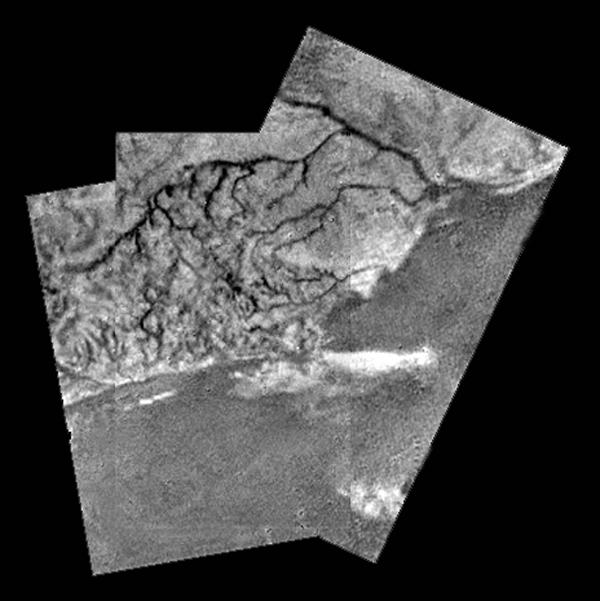 |
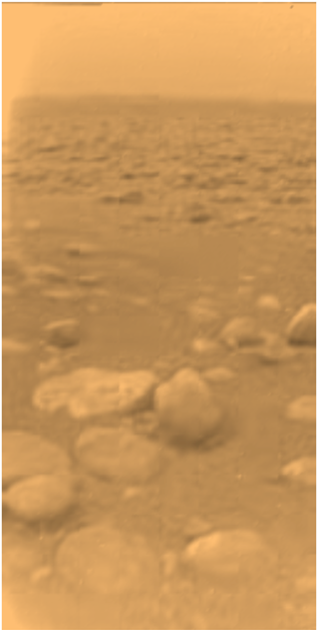 |
| Above to the left, we see the surface as the probe came down toward it. There are drainage channels (probably liquid methane stream beds) leading to what looks like a lake, but is really a solid surface (note the fine structure in the image). To the right, the surface of Titan after landing. It has a somewhat slushy consistency, again probably indicating liquid methane just below a surface of frozen ice. The blocks are not rocks, they are chunks of ice. (Images from ESA/NASA/University of Arizona, http://saturn.jpl.nasa.gov/news/events/huygensDescent/index.cfm The radar image below shows a lake of ethane and methane with a large island and emphasizes the complex structure of a Titan "shoreline" (from Cassini Imaging Team http://saturn.jpl.nasa.gov/multimedia/images/image-details.cfm?imageID=2502) The island is about 90 by 150 km in size (60 by 90 miles). These images show a geologically young surface (there are hardly any impact craters, for example). There are some volcanic-appearing features, but the "lava" is probably water and ammonia. Titan's mountains can reach to more than a kilometer in height. For more see http://saturn.jpl.nasa.gov/index.cfm | |
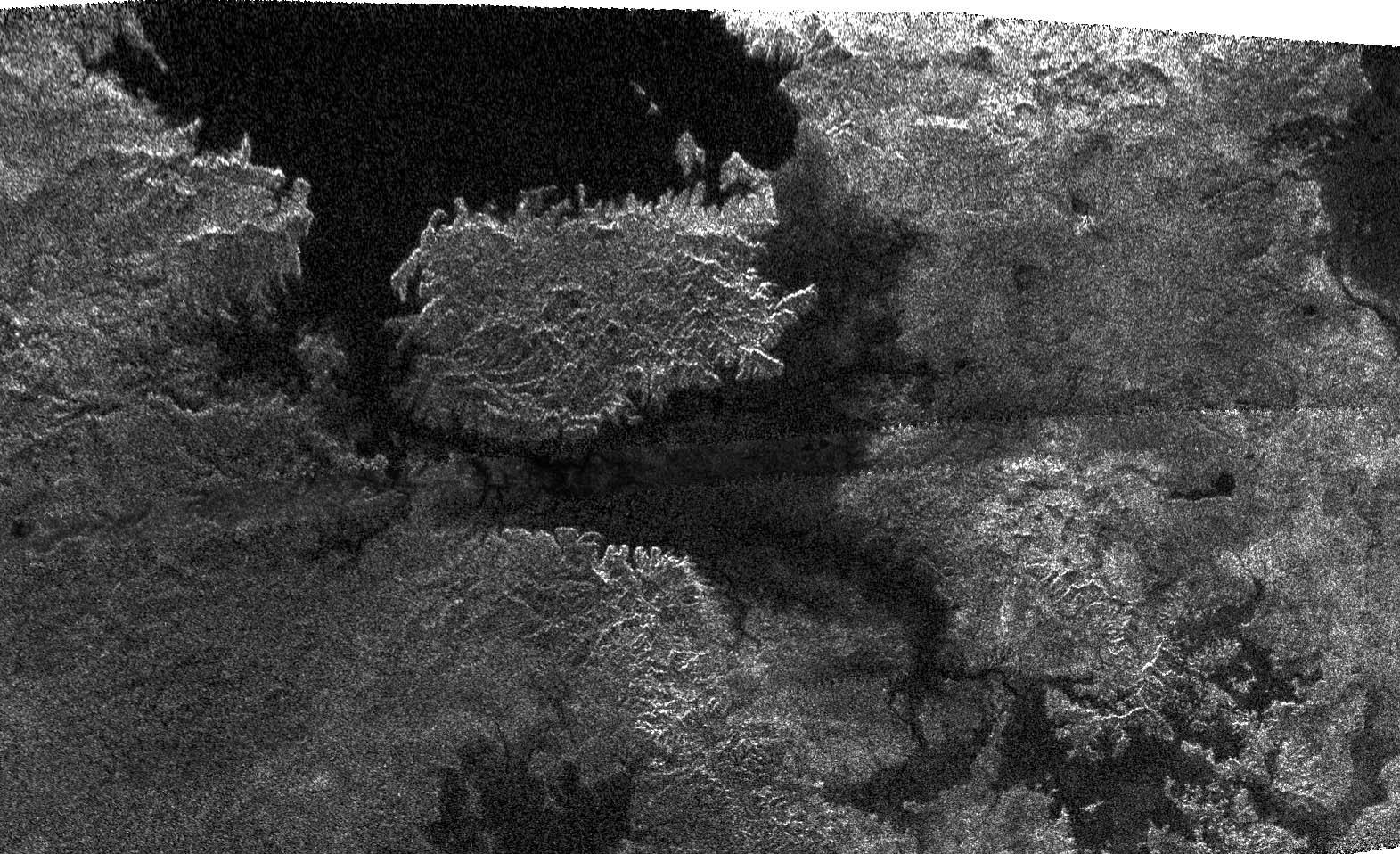 |
|
 |
It might look like this on the shore of the lake, with complex formations along the shore, and a misty haze due to methane and ethane in the atmosphere (which occasionally drizzle out to the ground, like rain). As we will discuss later, the composition of Titan's atmosphere is thought to give some hints about the composition of the atmosphere of the earth right after it formed. (painting by Stan Richard, provided by NASA/JPL) |
From the way the features on Titan rotate relative to the whole moon, it is believed that all the "solid land" may be floating on a deep ocean of water and methane, which lies about 100 km below the surface of the moon.
Some news sources reported much more spectacular
discoveries![]()
Triton:
Picture below, followed by artist's (Don Dixon) impression of the surface
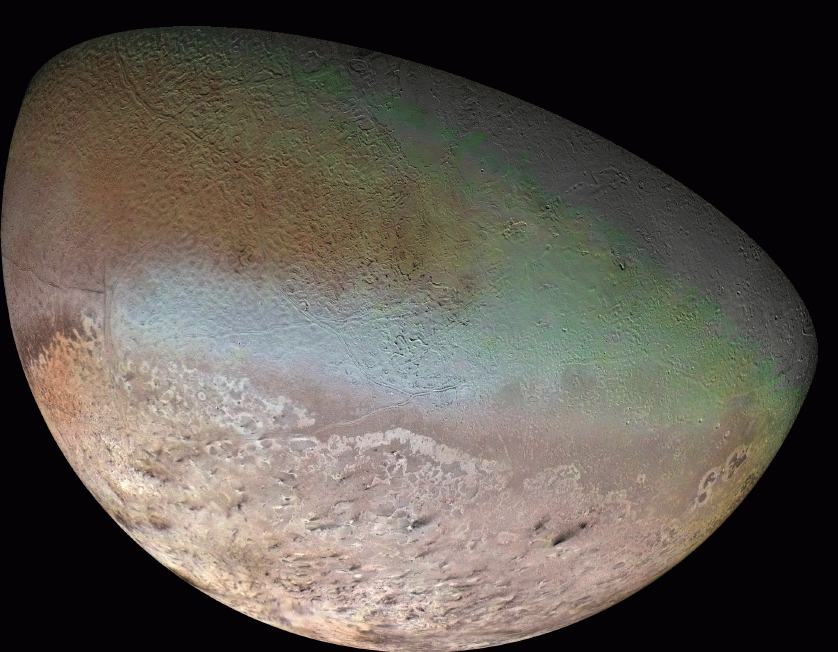

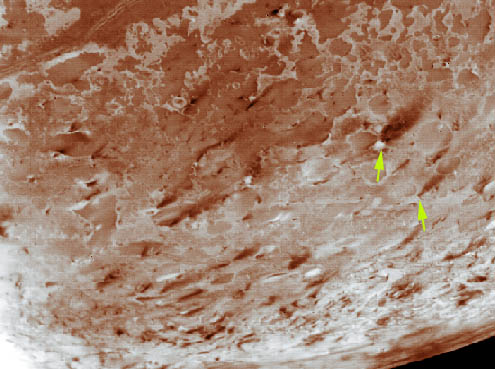 |
Vents or geysers on Triton (arrows). (From APOD, NASA, Voyager, C. J. Hamilton, http://antwrp.gsfc.nasa.gov/apod/ap950805.html) |
 |
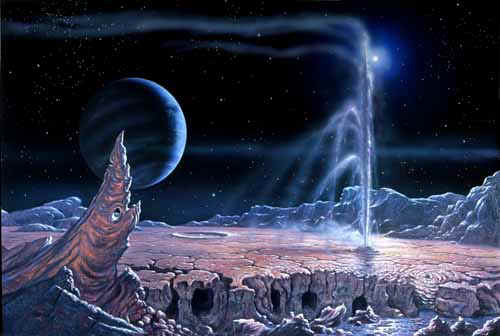 |
| A vent on Triton (artist's concept).(From William Hartmann, http://www.psi.edu/hartmann/planets.html) | Another version, by another artist (From David Hardy, http://www.hardyart.demon.co.uk/html/main.html |
The smaller moons of the giant planets are mainly icy – more like comets than asteroids![]()
As an example, we show Dione and Phoebe, moons of Saturn:
 |
Dione, to left from Cassini-Huygens, http://photojournal.jpl.nasa.gov/catalog/PIA09764 The "scratches" are bright walled canyons. Phoebe, to right, from Cassini-Hurgens mission, http://saturn.jpl.nasa.gov/home/index.cfm
|
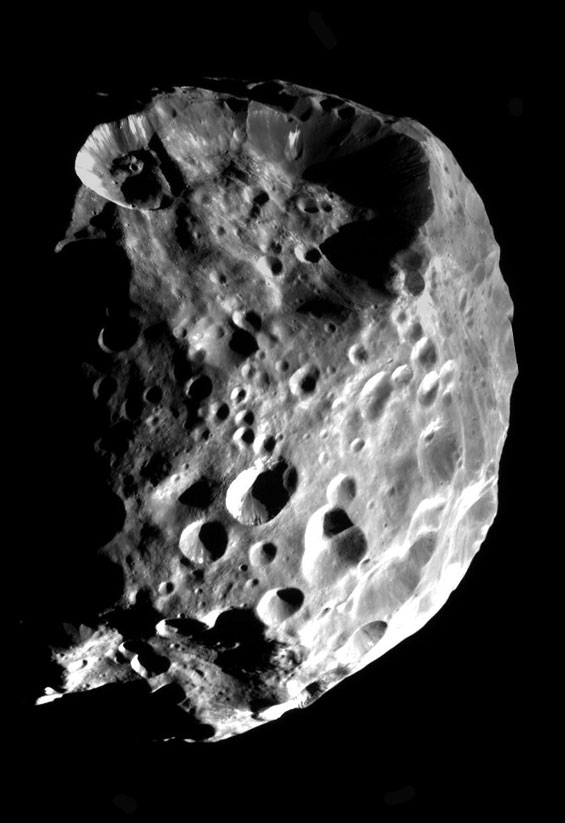 |
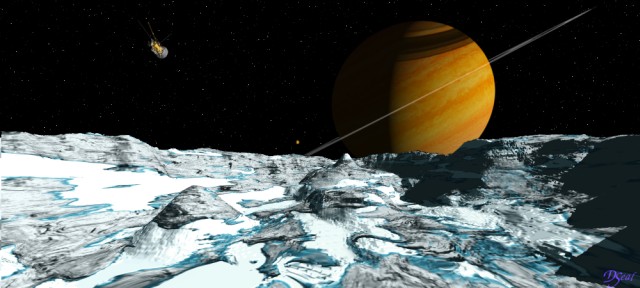 |
On the surface of Dione, from D. Seal http://samadhi.jpl.nasa.gov/art/surfaces.html |
Tiny moons - objects that came too close and were
captured - are being discovered all the time for all of the giant planets, so the total
count of moons keeps rising![]()
| We use this beautiful image of Saturn's moon Mimas (center right),
the rings of Saturn (bottom), and the planet itself to transition from moons to rings. It
was obtained by the Cassini orbiter, http://photojournal.jpl.nasa.gov/catalog/PIA06142
|
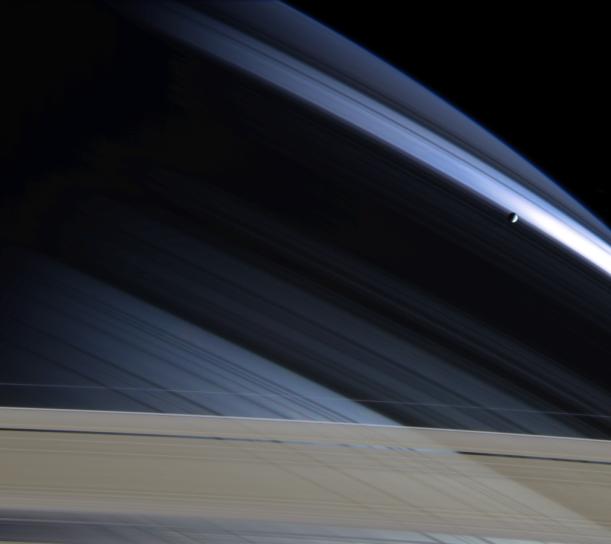 |
| Jupiter's Ring: (Voyager Project http://photojournal.jpl.nasa.gov/index.html) |
 |
Rings around Uranus (http://www.solarviews.com/cap/index/planetaryrings1.html) |
|
 |
 |
Rings around Neptune: (http://www.solarviews.com/cap/index/planetaryrings1.html) |
|
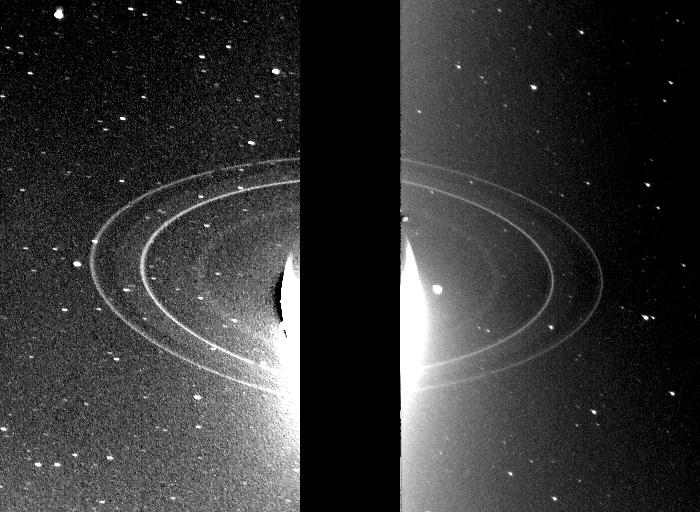 |
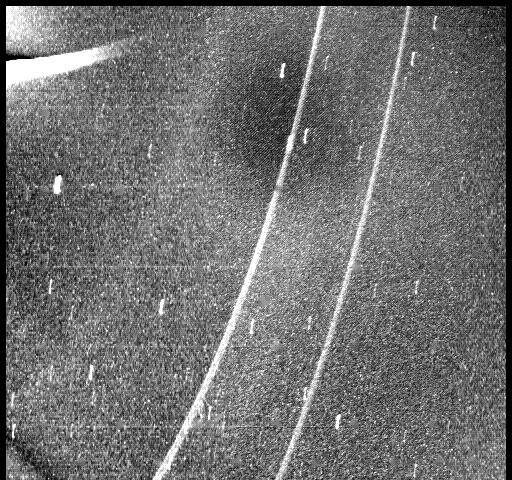 |
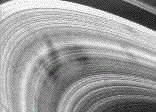 |
Rotation of Saturn rings shows subtle dark features, while the image
to the right shows the complex structure imposed by gravitational tugs by Saturn's moons. (from Cassini Huygens. http://saturn.jpl.nasa.gov/home/index.cfm |
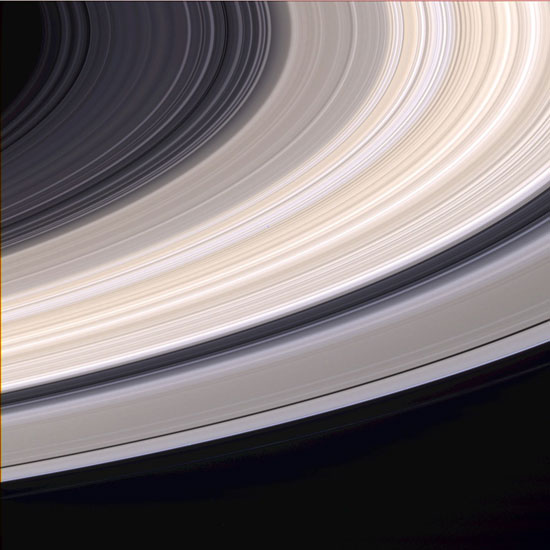 |
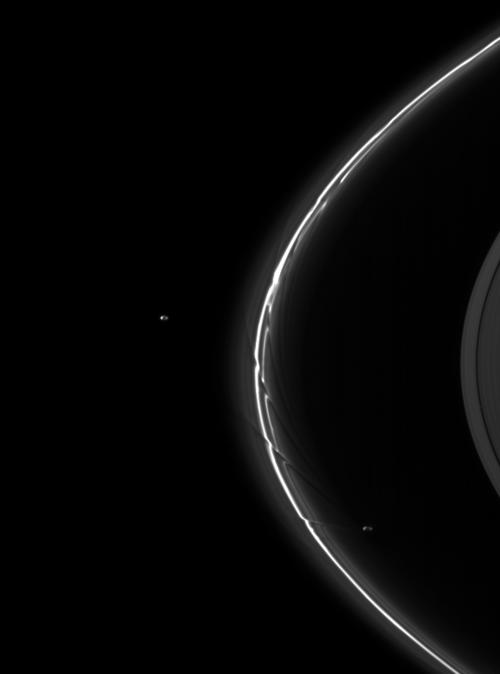 |
The importance of gravity in defining ring
structures is highlighted by these complex structures in the F Ring driven
by the action of its two shepherd moons, Pandora and Prometheus.
Pandora (50 miles across) orbiting outside the F ring and Prometheus (53 miles across) orbiting inside together keep the particles in the ring within narrow lanes. Consequently they are called shepherd moons. The gravity of potato-shaped Prometheus creates the streamer-channels. (From http://saturn.jpl.nasa.gov/photos/)
|
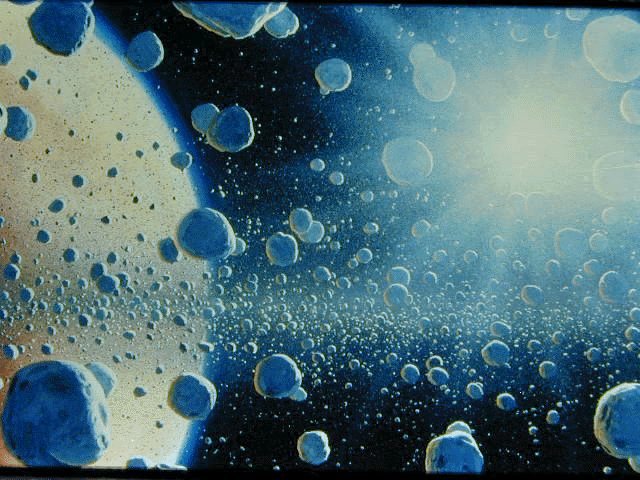 |
In Saturn's rings (painting by William Hartmann) The rings are made almost entirely of small particles of water ice. Rings are the result of breakup of moons. We calculate that the rings should not last for the life of solar system without being replenished. Thus, they may reflect relatively recent (on the scale of the 4.5 billion year age of the solar system) events causing small moons to break up. |
| One way to cause a moon to break up is by
having gravitational interactions with other moons to cause it to go into an orbit that
penetrates inside the Roche limit. The Roche limit: distance at which tidal force on body is equal to its self-gravity Large bodies held together by gravity will be broken up by tides if they are inside the Roche limit (animation by G. Rieke) |
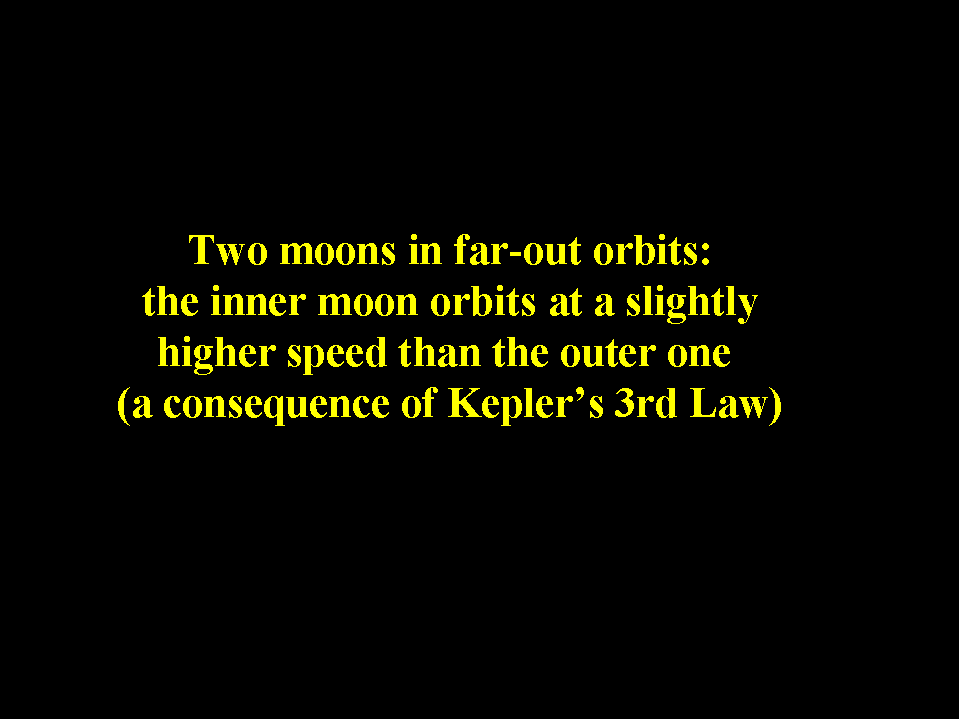 |
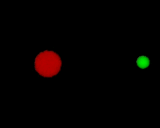 |
Here is how the Roche limit works if a moon's orbit takes it too close to the planet .(Adapted by G. Rieke from J. Barnes, http://www.ifa.hawaii.edu/~barnes/ast110/ |
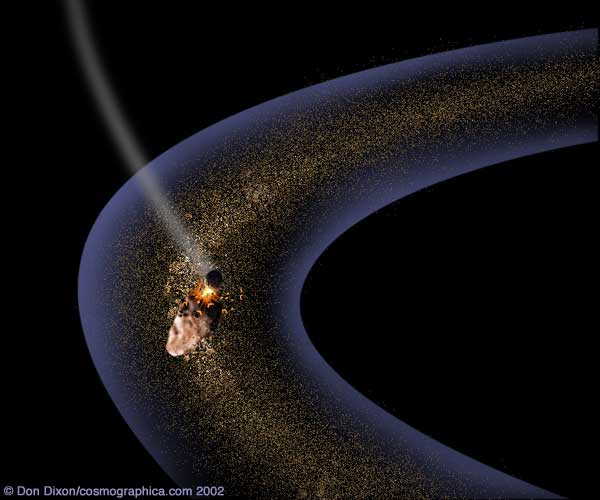 |
Rings
can be formed at any radius if there is a collision that breaks up
satellites
(as in this painting by Don Dixon),
but they are most likely to be within the Roche limit since self-gravity can no longer hold satellites together there. |
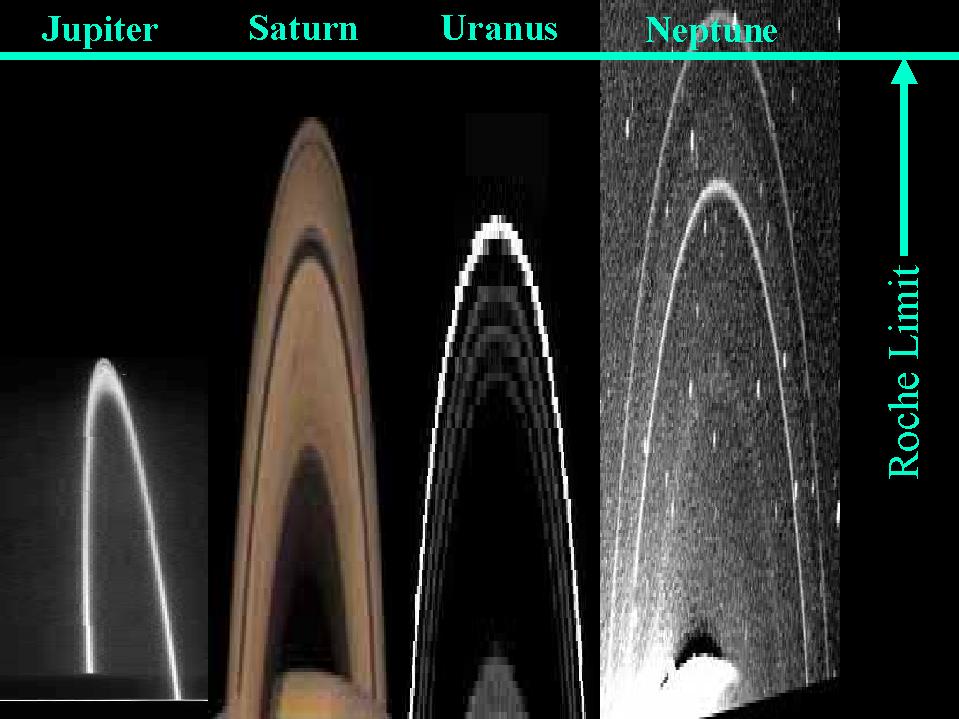 |
Most of the rings in fact lie within the Roche limit, with just a few outside. (illustration by G. Rieke) |
Test your understanding before going on![]()
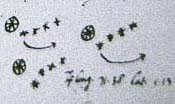
Galileo's original drawing of Jupiter and its moons. |
Child's book from,http://www.gasolinealleyantiques.com/cartoon/disney.htm |
|
Click to return to syllabus |
||
| Click to return to Moons of Jupiter | hypertext |
Click to go to Pluto |